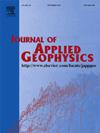Obtaining an initial model for acoustic full waveform inversion using generalized regression neural networks
IF 2.2
3区 地球科学
Q2 GEOSCIENCES, MULTIDISCIPLINARY
引用次数: 0
Abstract
Acoustic full waveform inversion is a featured method extensively used to obtain subsurface velocity models. The acoustic full waveform inversion approximation based on the derivative method has the limitation of being trapped in local minima. To overcome this problem, an initial velocity model in the vicinity of the global minimum should be used as the starting point. Artificial neural networks can be used to build such initial models. In this study, a generalized regression neural network approach was applied to overcome this problem. The test results on the Marmousi and SEAM synthetic data demonstrate that the initial model estimated with the generalized regression neural network provides a better starting point for full waveform inversion. In addition, the number of iterations required to search for optimal results was reduced significantly. The reduction in the number of iterations due to determining an initial model with generalized regression neural networks also substantially reduced the computational time and reduced the probability of the model becoming stuck in local minima. The acoustic full waveform inversion yields a detailed velocity model when using the initial velocity model produced by general regression neural networks.
求助全文
约1分钟内获得全文
求助全文
来源期刊

Journal of Applied Geophysics
地学-地球科学综合
CiteScore
3.60
自引率
10.00%
发文量
274
审稿时长
4 months
期刊介绍:
The Journal of Applied Geophysics with its key objective of responding to pertinent and timely needs, places particular emphasis on methodological developments and innovative applications of geophysical techniques for addressing environmental, engineering, and hydrological problems. Related topical research in exploration geophysics and in soil and rock physics is also covered by the Journal of Applied Geophysics.
 求助内容:
求助内容: 应助结果提醒方式:
应助结果提醒方式:


